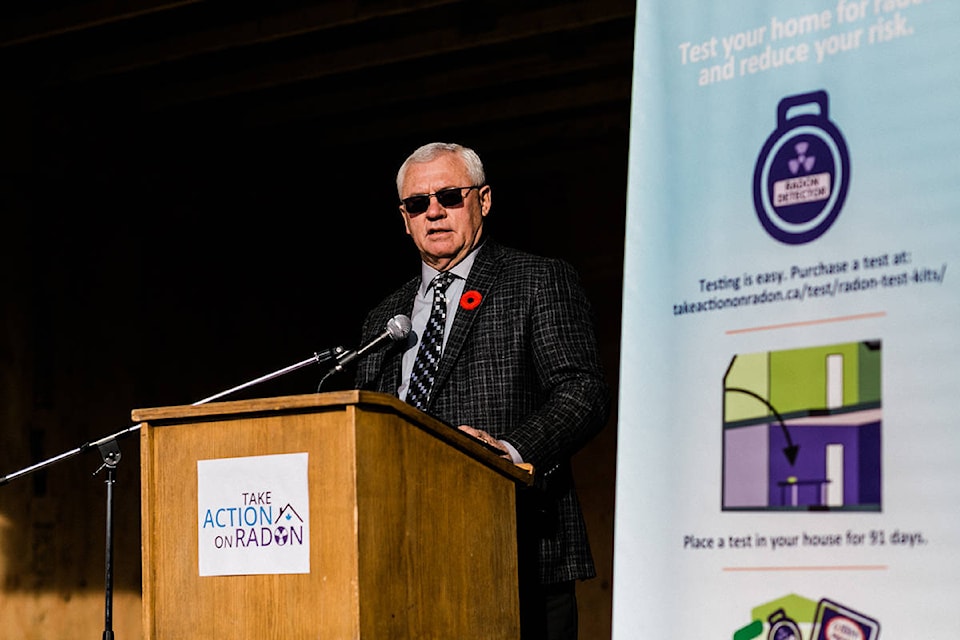Representatives from the national health campaign Take Action on Radon have called Abbotsford a “leading municipality” for its efforts to spread awareness of the cancer-causing gas.
“I am all for safety. We have a responsibility to the community and to our citizens,” said Mayor Henry Braun after the presentation of a report to city council on Nov. 4.
Radon – an invisible, odourless and tasteless gas created from the breakdown of uranium in soil and rock – is present in every home but is carcinogenic when built up to high concentrations.
November is Radon Action Month and the City of Abbotsford is one of 15 communities across the country participating in the health campaign to get citizens to test their homes for high levels of the gas.
Abbotsford is also one of six municipalities in B.C. that opted to change their building code in 2018 to include protective measures. The changes require new buildings to install a ventilation pipe which pumps out stagnant air.
Installation of the radon-reduction system into an older home costs around $3,000, says Pam Warkentin, executive director of the Canadian Association of Radon Scientists and Technologists.
Take Action on Radon organized a meeting at a show home on Nov. 4 to demonstrate the installation of the pipe. The meeting was attended by over 30 stakeholder groups, ranging from construction professionals to public health researchers.
| This ventilation pipe was installed inside an Abbotsford show-home on Monday. The demonstration was attended by a group of over 30 stakeholders, ranging from construction professionals to public health researchers.(Photo courtesy of Take Action on Radon.) |
“This is something that can create a foundation for the city to make informed decisions moving forward, whether you include radon testing as part of building permits or sell testing kits out of your offices or include information when city taxes and fees are due from homeowners,” said Jenny Byford, advocacy lead for Take Action on Radon.
One-hundred test kits will be handed out Nov. 20 at the Matsqui Centennial Auditorium. The test kits, which look like tiny hockey pucks, will be returned on March 20.
Once analyzed, the data from the test kits will be compiled into a nation-wide database showing the radon levels across the city.
Health Canada conducted a similar, but smaller, nation-wide survey in 2012.
But in recent years, communities conducting their own research have been finding much higher levels than those originally reported, said Warkentin.
Prince George and Castlegar, in two B.C. examples, found radon levels to be twice as high as the numbers from the 2012 survey.
Byford said that testing for radon should be as automatic as installing a smoke detector.
“Cancer caused by radon is responsible for more deaths per year than motor vehicle collisions, house fires, carbon-monoxide poisoning and accidental drowning combined,” she said.
“Yet only six per cent of the population has tested their home for radon.”
RELATED: Abbotsford partners with national health coalition for radon awareness campaign
